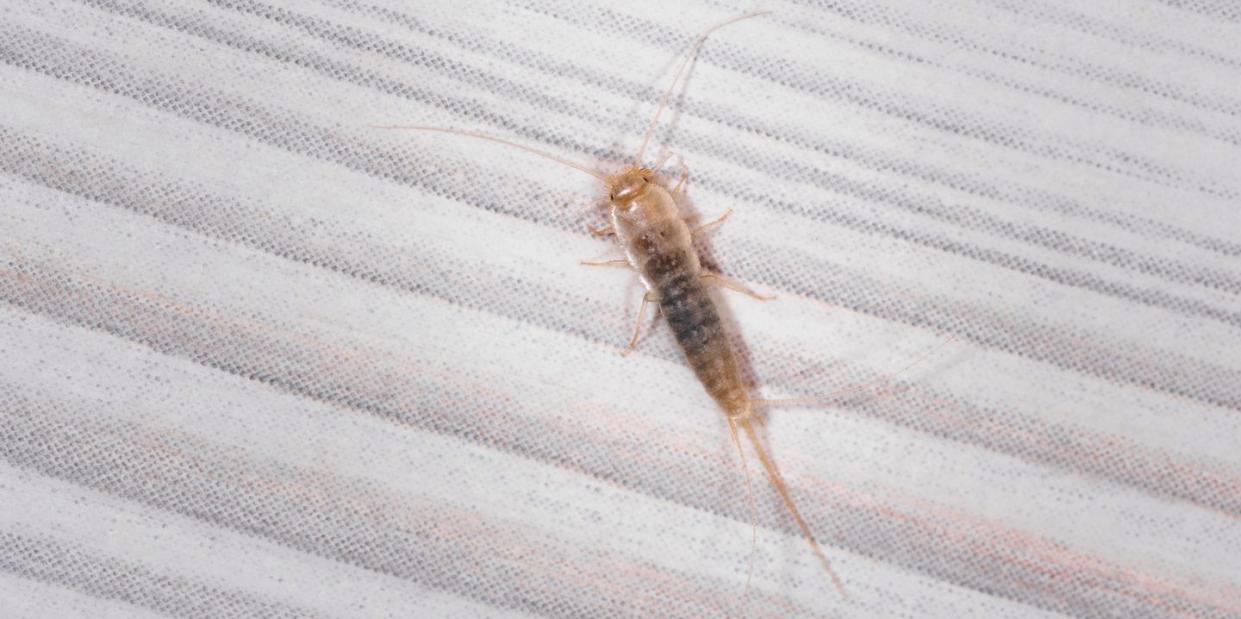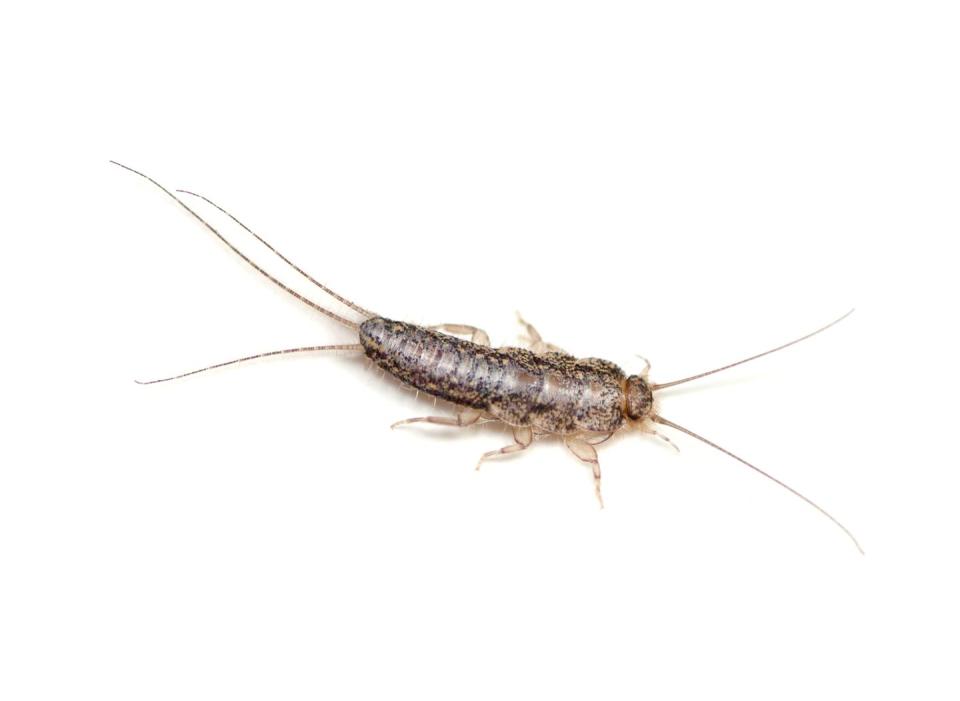How to Get Rid of Silverfish in Your House, According to Pest Control Experts

Out of all household bugs, one of the most unsettling is silverfish. These gross little insects can dart out nowhere and quickly hide again, making them a bit tricky to kill. If you’ve spotted silverfish in your home, the odds are pretty high you wish you didn’t.
Despite their name, silverfish aren’t actually fish (but you knew that!). “They are known for their wiggling movement, resembling the way a fish moves,” says Nancy Troyano, Ph.D., board certified entomologist and director of operations education and training for Ehrlich Pest Control.
In fact, they’re thought to be one of the oldest insects in the world and may have even been around before dinosaurs roamed the earth. “There are about 18 different species native to North America,” says Judy Black, vice-president of quality assurance and technical services at Orkin, LLC. They’re usually nocturnal (meaning they’re most active at night) and can live up to five years, she says.
While they won’t hurt you, these pests can be a pain to deal with—and you don’t want them to overstay their welcome. Here’s how to get rid of silverfish in your house and prevent them from coming back, according to pest control experts.
First, what do silverfish look like?

Silverfish are usually gray or silver, have a shiny exterior, and can range in size from a half inch to one inch long. In general, they’re “small insects with a silvery look that resembles scales,” Troyano explains. Silverfish also have long antenna on their heads and usually three appendages on their rear.
Where do silverfish live in houses?
Silverfish prefer damp places. Inside your home, that could mean your attic, bathroom, basement, living room, bedroom, or garage—any space that’s nice and moist. “Silverfish thrive in areas with high humidity and live close to their food source,” Troyano says. “They enter your home seeking out food and a warm, wet space.”
They also just like to feel safe. “They are mostly attracted to the shelter. So, it’s all about the protected space: protection from the elements and from predators,” Black says.
But silverfish can also survive for weeks without food and water, per Troyano. Females can lay up to three eggs a day, leaving them in cracks or behind objects like baseboards.
Do silverfish bite? Are they harmful?
Despite their creepy appearance and movement patterns, silverfish won’t attack you or try to bite you. That said, they will try to eat objects in your home. “They can consume a wide variety of food, materials, household items, and clothing,” Troyano says, including paper, wallpaper, glue, and even other insects.
How to kill and get rid of silverfish in your house
There are a few different tricks you can try to kill silverfish in your home:
✔️ Use a dehumidifier. Because silverfish love moist environments, running a dehumidifier in damp parts of your home, like your basement, can help make the area less attractive to them or dry them out, Troyano says.
✔️ Suck them up. If you spot silverfish and don’t want to kill them in a messy way, “vacuuming them is the fastest and easiest way to get rid of them,” Black says.
✔️Sprinkle diatomaceous earth in hotspots. Diatomaceous earth is a powder that destroys the outer coating of silverfish and other bugs, like cockroaches, ants, and bed bugs. As a result, they will lose moisture and die. You can sprinkle a little in areas where you’ve seen silverfish, Troyano says. Just don’t go overboard with it: If you do, “the bugs will navigate around it,” she says. (When in doubt, follow the instructions on the packaging.)
✔️ Try a trap. You can buy silverfish traps online, which use boric acid to poison the bugs. Just place them in areas where you’ve seen silverfish and let them go to work. These traps are extremely effective, but may not always be a safe option if you have curious children or pets around. Be sure to read the label for all safety guidelines before you treat your home.
If you prefer to go a non-toxic route, you can try a sticky trap instead, which uses bait and glue to keep the pest in place once its made contact.
✔️Call a professional exterminator. If you believe you have an infestation (meaning you spot more than just one or two silverfish here and there), Troyano says it’s a good idea to call a pest control service. “A heavy silverfish infestation can lead to considerable damage to books, paper products, or synthetic fibers,” she points out. “To properly control silverfish, they must first be identified, and the area should be decluttered and treated.”
How to keep silverfish away from your house
Of course, the best way to keep silverfish away is to prevent them from getting into your home in the first place. Experts recommends doing the following to keep the bugs at bay:

Keep dry goods (think: cereal, pet food, pasta) in airtight containers
Clean up fallen food crumbs thoroughly
Sweep and vacuum regularly
Reduce clutter, particularly in moist areas like the basement or attic
Run a dehumidifier regularly in damp spots of your house
Keep your gutters clean to help direct water away from your house
Make sure the outside of your house is caulked and sealed
Store your stuff in sealed plastic containers, not cardboard boxes
Overall, make sure that your home is clean. “Silverfish will infest any indoor or outdoor area that has been abandoned or remains neglected, particularly in locations where food is available,” Troyano says.
Go here to join Prevention Premium (our best value, all-access plan), subscribe to the magazine, or get digital-only access.
FOLLOW PREVENTION ON INSTAGRAM
You Might Also Like

